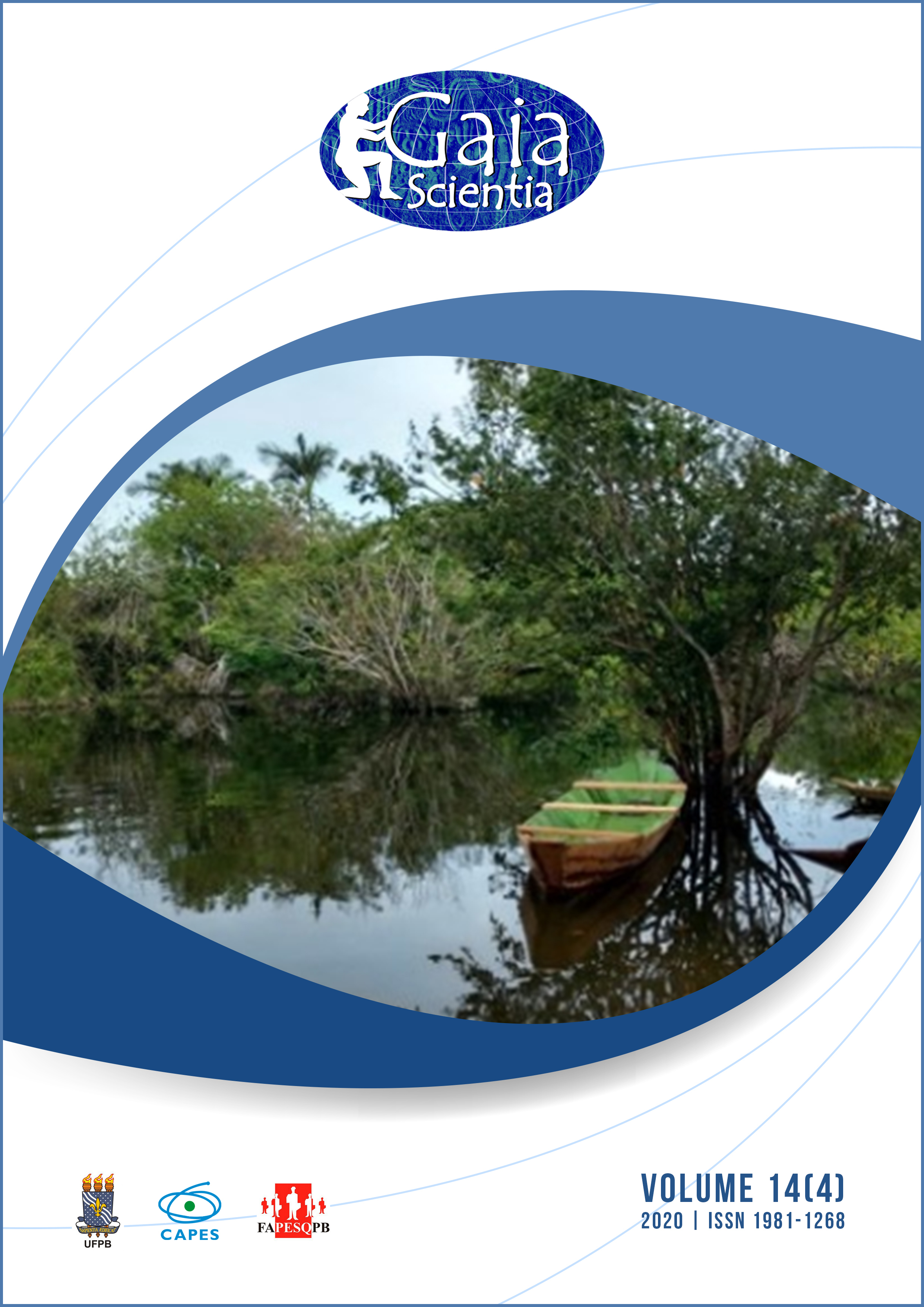Analysis of landscape units and socio-environmental implications in permanent preservation areas in the Northeast and South of Brazil
DOI:
https://doi.org/10.22478/ufpb.1981-1268.2020v14n4.52548Abstract
Permanent Preservation Areas (APPs) are regulated through Federal Law No. 12. 651/ 2012. This Law acts as a regulatory instrument in the decision-making process to minimize socio-environmental problems, caused by various anthropic interferences. Thus, this article aimed to analyze the landscape units in urban APPs in the cities of Aracaju / SE and Blumenau / SC. A comparative analysis for this study was carried out between inlands of each municipality. The criteria of choice of each chosen inland was important because it showed a strong anthropic action. The coverage areas were i) the Ribeirão Fresco watershed in Blumenau, and ii) the Poxim River in Aracaju. The methodological procedures of this study were divided into 3 stages: literature review; technical visits and data systematization, using Geoprocessing techniques, photographic survey and document analysis. It was observed that in both regions there were similar socio-environmental problems, such as the occupation (construction of buildings) in areas destined to APPs. Through them, anthropic pressures were increased, resulting in problems such as floods, landslides, incorrect disposal of solid waste, among others. Finally, it is expected that, with the results presented, there will be intervention by the public authorities in these legally protected areas, with the formulation of effective public policies, preserving the socio-environmental function of APPs.










